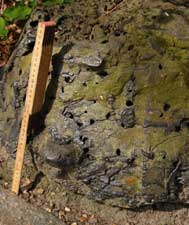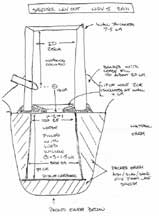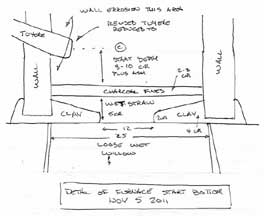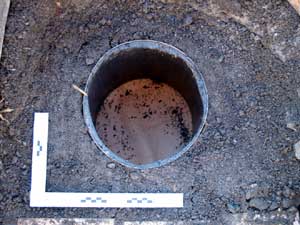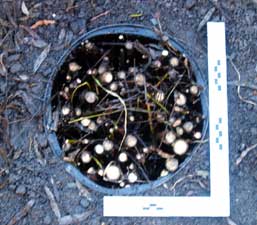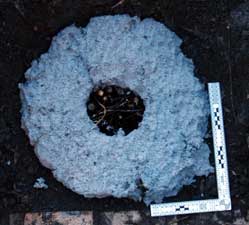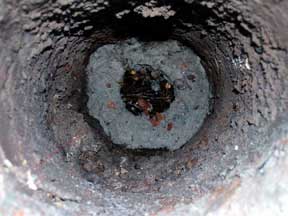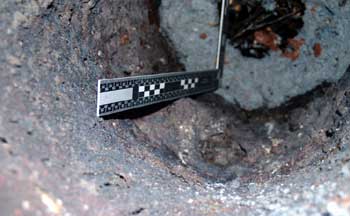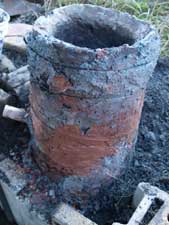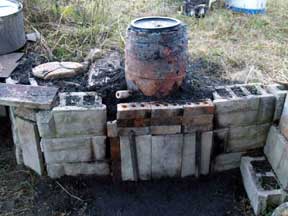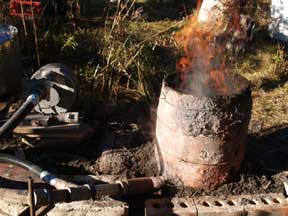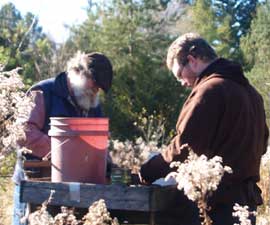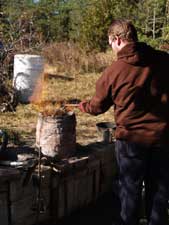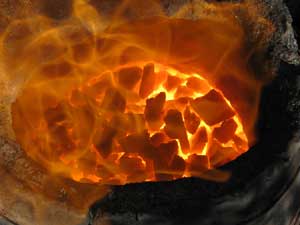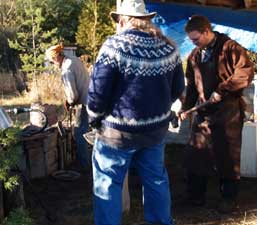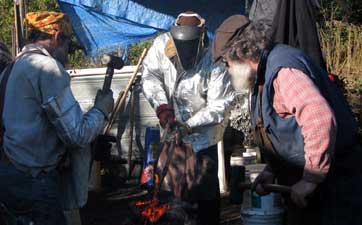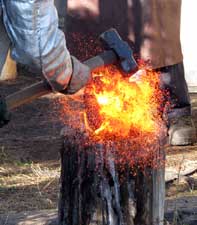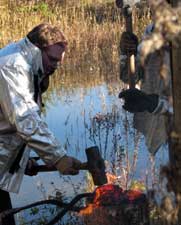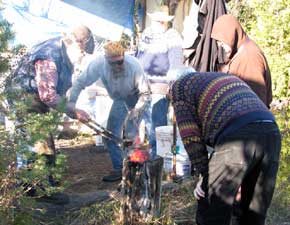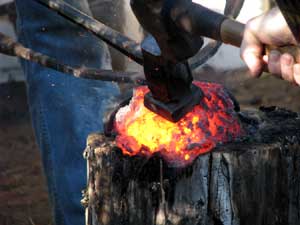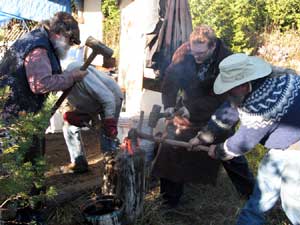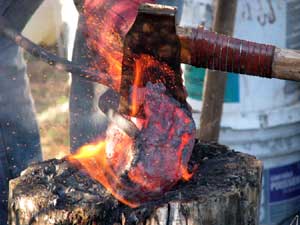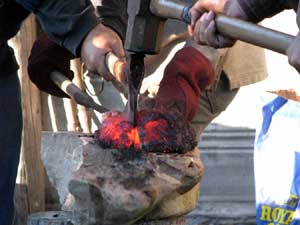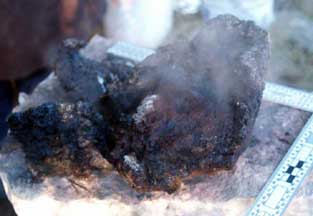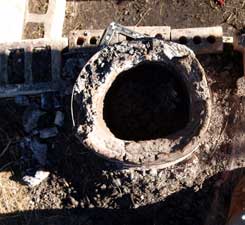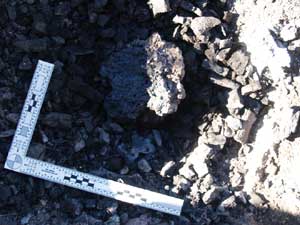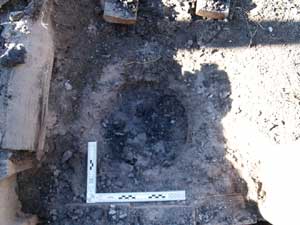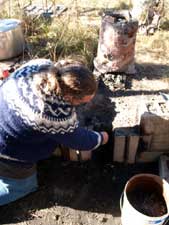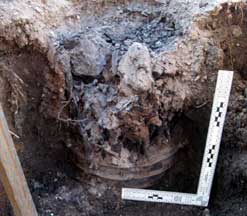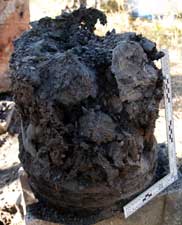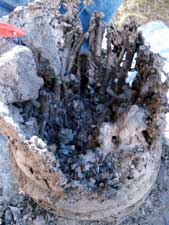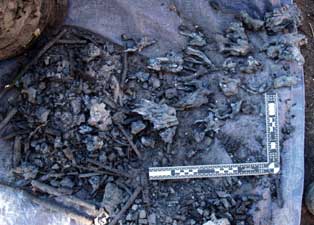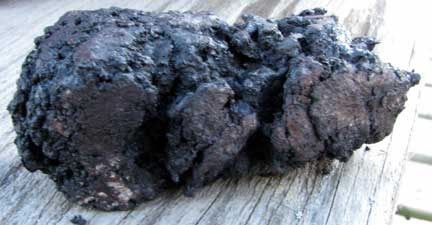(Repeat of background from October 9)
The Slag Pit style furnace is an older type than the Slag Tapping furnaces that have dominated our work to date. The base of the furnace has a shallow hole or pit dug below ground, which is then filled with some kind of vegetation. In use, the vegetation at first supports the burning fuels in the furnace itself. The inital slag forms into the normal bowl shape below tuyere level. As both heat increases and slag accumulates, at first runnels of slag will drip down through the vegetation. Increasing heat first carbonizes the plant materials, then the weight of of the slag mass slowly settles into the pit. Designed and managed correctly, there is no need for additional tapping of slag. The upper furnace structure itself varies, ranging from smaller bellows blown to larger natural draw types.
The slag pit arrangement was common throughout Europe, roughly up to the end of the Roman period. The slag blocks created are almost industructable, and thousands remain. In Denmark alone, over 2000 have been found. Typically these are roughly the size of a bushel basket. (Image at the right is from the lower Jutland area, from my 2008 trip.)
I had seen both Jake Keen and Jan Jennisen both build and fire slag pit furnaces at the 2008 Heltborg 'Iron Smelting Seminar at Thy'.
Those interested in more details on the slag pit furnace are refered to the work of Thijs van de Manakker :
'Experiments
with a Slag Tapping and a Slag Pit Furnace' (PDF download)
Originally published in 'EARLY IRON PRODUCTION Archaeology, Technology
and Experiments' - Edited by Lars Chr. Norbach
